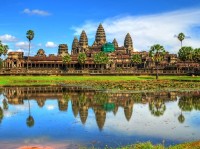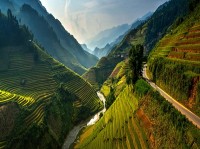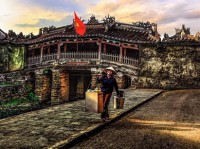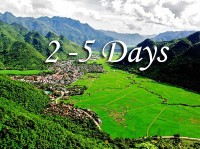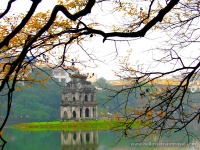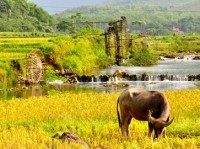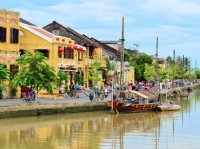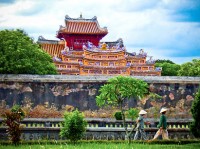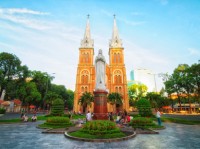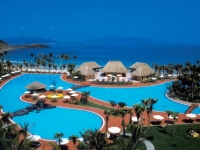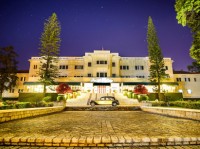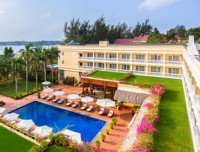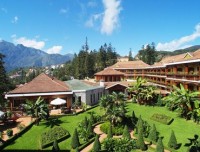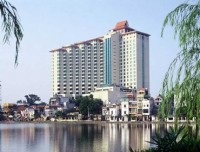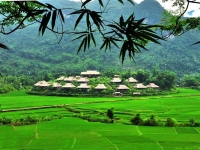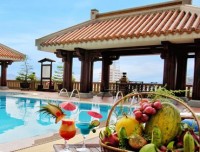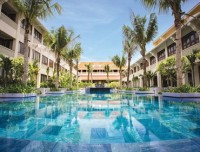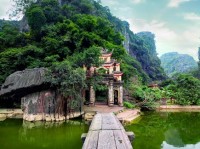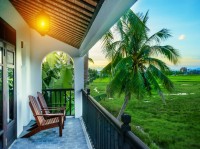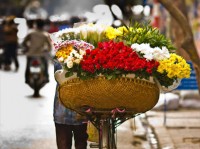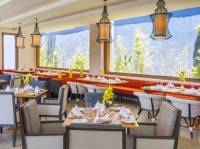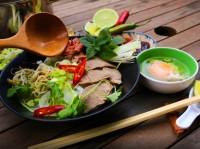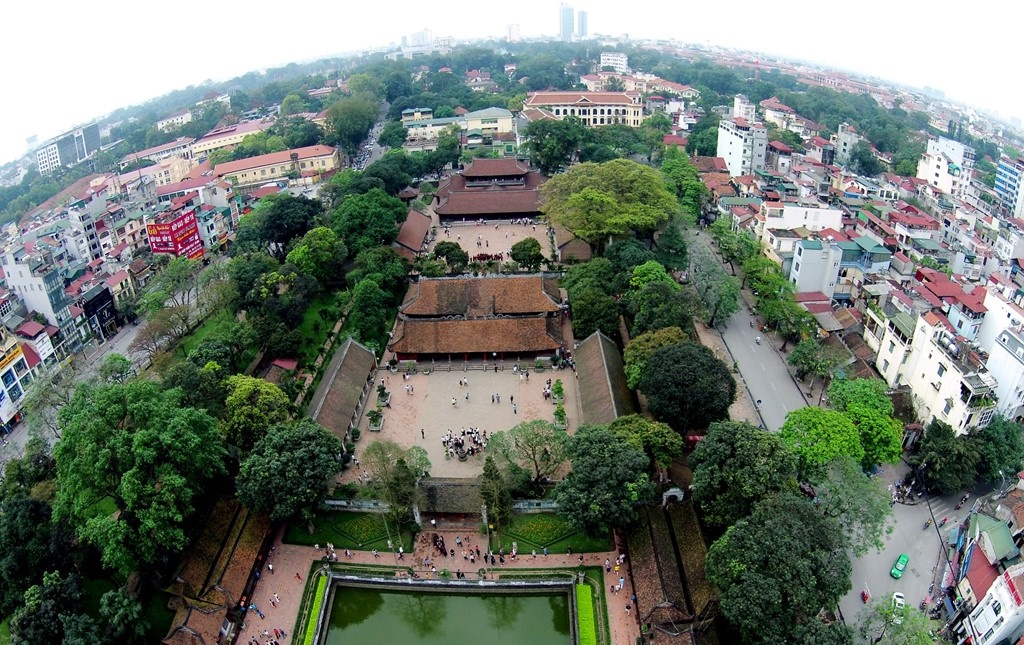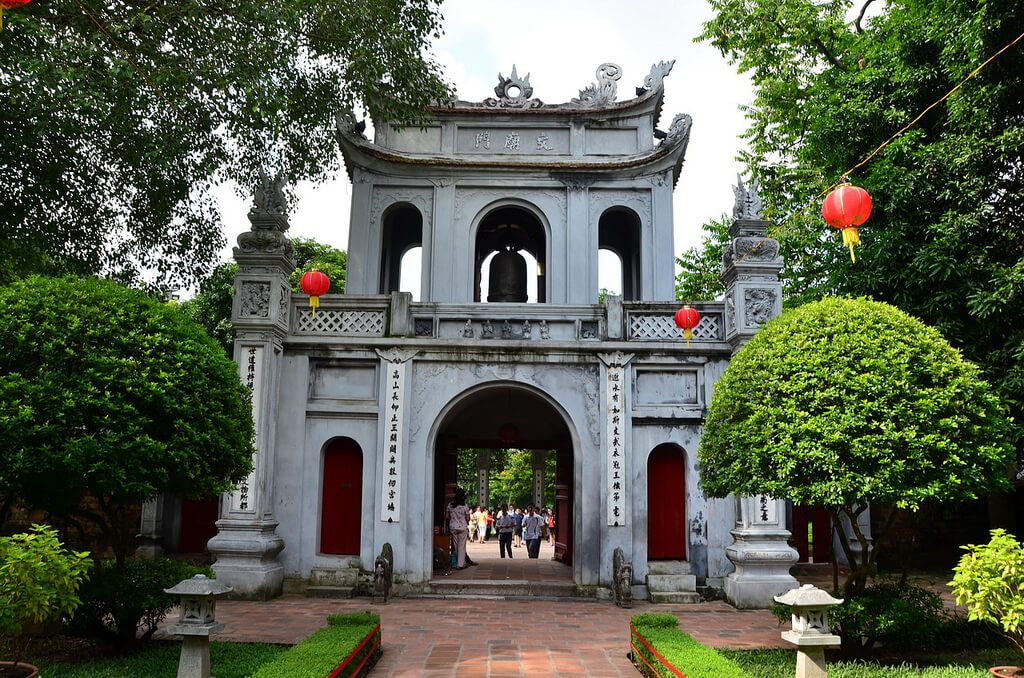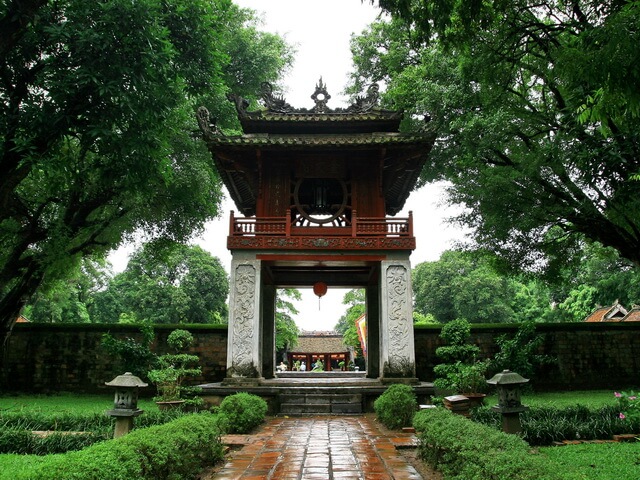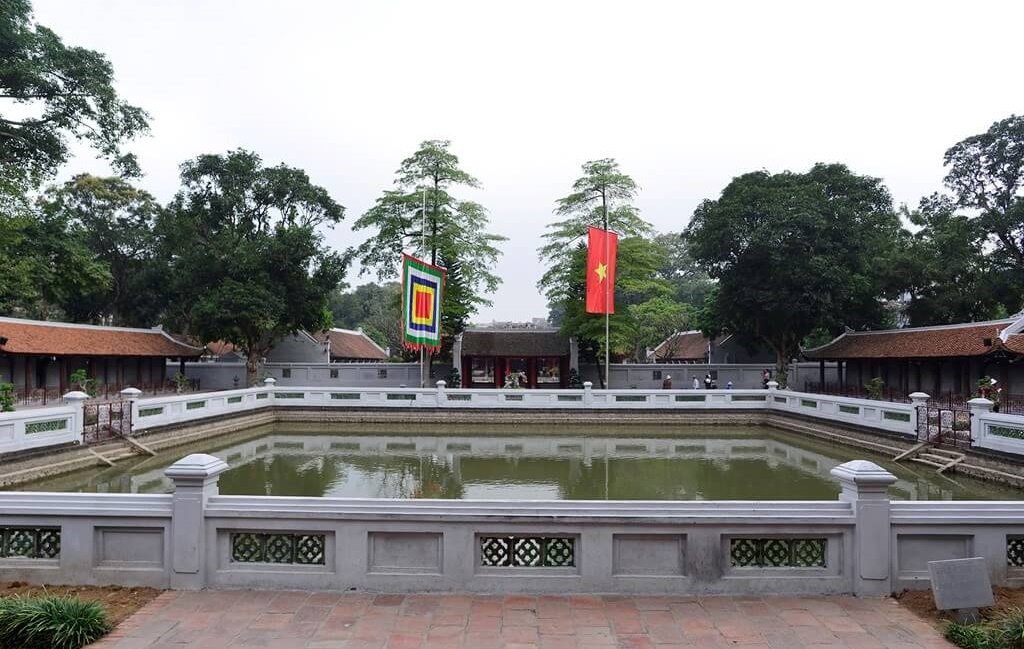History
In the first time, Temple of Literature was constructed in 1070 under the period of Le Thanh Tong emperor with the purpose for worshiping Confucius and training for sons of royal members. After that, this school expanded its scale when it allowed excellent civilians to study.
Overview of Temple of Literature
Structures
Amidst the bustling pace of life in Hanoi capital, Temple of Literature offers a taste of tranquility and contemplation because a harmonious combination between ancient architecture and the green space of old trees in this place.Temple of Literature is surrounded by walls of massive bricks (“Gach vo”), a popular material for construction under Hau Le dynasty (1427-1789).
With a large area of 54,331m2, Temple of Literature is divided into different courtyards. At first, the visitors have to go through a big gate, called “Van Mieu gate”. In the past time, it was said that mandarins have to take a visit in front of this gate when they pass by Temple of Literature, regardless of how their high status is. The gate is also decorated with Vietnamese holy animals such as “Nghe” (a hybrid animal between tiger and dog). The ancient ancestors consider that those animals have ability to see through the angels and evils.
Van Mieu Gate
Dai Trung gate is behind Van Mieu gate, featured by a straight brick road lined with two green grasses. The gate follows the Asian architecture with three roof-tiled compartments and two narrow porches.
After that, tourists can visit Khue Van Cac pavilion, which means “the beauty of morning star”. Although it is only a small structure on the whole of Temple of Literature, this place is well-known by the sophistication of Vietnamese architectural style. In the previous time, it is an ideal place for gathering of talent students. Until now, this site has become one of famous symbols of Hanoi capital with the popular appearance in the pictures, brochures, or books.
Thien Quang well is next to Khue Van Cac pavilion with its name’s implication for the the light of sun”. It is said that the ancient people was inspired the Eastern perceptions into those 2 structures: the square of Thien Quang well is the symbol of God and the circular shape of Khue Van Cac pavilion is the symbol for Earth.
Lined along Thien Quang well, 82 tombstones on the turtles’ backs is considers as one of the most precious treasure of Vietnamese. After each examination was organized under the period of feudalism, the most talent people with the title of doctorates will be recorded and honored in those tombstones.
Stepping through Dai Thanh Mon gate, visitors will access the main part of Temple of Literature. It is the shrine for worship Confucius and their talent students. In front of this structure, there is a large courtyard, which paved by Bat Trang brick, a famous kind of Vietnamese brick in the past time. Besides, feudal dynasty also erected a house with 9 different compartments serving for ceremonial activities at that time.
Khai Thạnh Temple is the final part of Temple of Literature, where worships Confucius’s parents. Besides, “Hau Duong” house is to honor Chu Van An (1292-1370) – the devoted teacher, who sacrifices their life for the spread of knowledge and ethics for Vietnamese young generations in the past time.
Statue of Chu Van An


